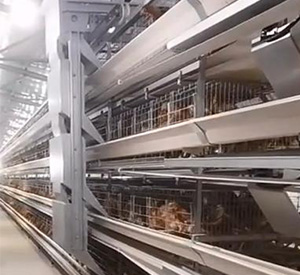Management and maintenance of laying hen cages
- Published in Chicken cages
The management and maintenance of laying hen cages are the key to ensuring the health and breeding efficiency of laying hens. First of all, clean the chicken cage regularly, remove chicken manure and debris in the cage, and keep the cage clean and hygienic. Be careful to use appropriate detergents when cleaning to avoid harm to laying hens. At the same time, the water fountains and feeders in the chicken cages must be replaced regularly to ensure that the laying hens can eat normally.
Secondly, it is necessary to regularly check whether the structure of the chicken cage is intact. If there is any damage, it should be repaired or replaced in time. Check whether the doors and windows of the cage are tightly closed to prevent the laying hens from escaping or being invaded by the outside world. In addition, the ventilation and ventilation conditions of the chicken cages must be checked regularly to ensure that the living environment of the laying hens meets the standards.

In addition, chicken cages should be disinfected regularly to prevent the spread of germs. When disinfecting, you should choose an appropriate disinfectant and operate according to the instructions to ensure disinfection effect and safety. At the same time, good hygiene management should be done around the chicken cages to prevent the breeding of mosquitoes, flies and other pests.
Finally, regular health checks of laying hens should be carried out. During the inspection, attention should be paid to observing the mental state, diet and body changes of the laying hens, identifying problems in a timely manner and taking corresponding measures. In addition, epidemic prevention work such as vaccination and deworming of laying hens must be carried out regularly to ensure the health and breeding efficiency of the laying hens.
To sum up, the management and maintenance of poultry laying hen cages are important links to ensure the health and breeding efficiency of laying hens. Regular cleaning, inspection and disinfection of chicken cages, as well as health inspection and epidemic prevention of laying hens, can improve the production performance and breeding efficiency of laying hens.

